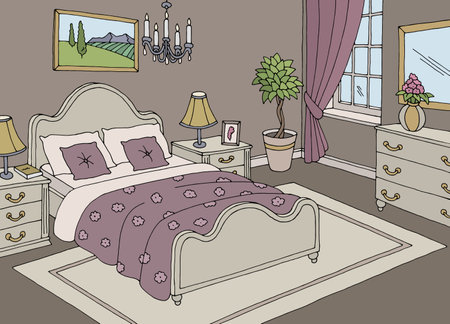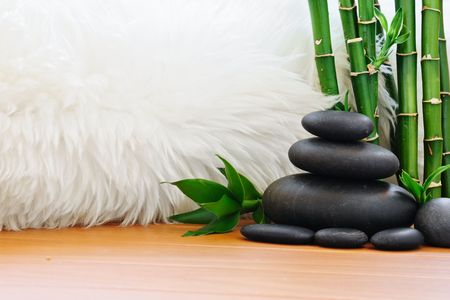Understanding Mindful Decluttering
Mindful decluttering is more than simply tidying up; it is a thoughtful practice rooted in presence, intention, and the creation of harmonious spaces. At its heart, this approach invites us to pause and tune in to the atmosphere of our homes, allowing us to make decisions with clarity and care. Drawing inspiration from the ancient art of Feng Shui, mindful decluttering encourages us to notice how our environment shapes our wellbeing—energies flow more freely where there is space, both physically and emotionally.
In Britain, where heritage and tradition often echo through our homes—from Victorian terraces to quaint country cottages—the process of letting go can be especially nuanced. Heirlooms and cherished keepsakes tell family stories, connecting us to generations past. Mindful decluttering does not ask us to strip away character or history; rather, it guides us to keep what truly supports our sense of comfort and belonging. By combining the wisdom of Feng Shui with a gentle respect for British customs, we create environments that nurture wellbeing while honouring the spirit of home.
2. Introducing Feng Shui: A Flow of Energy
At the heart of Feng Shui lies the ancient Chinese philosophy that our surroundings profoundly influence our wellbeing, success, and inner harmony. In essence, Feng Shui is about creating a seamless flow of energy—or “chi”—through your living space, allowing positivity to flourish while gently dispelling stagnation. This wisdom might seem far-flung from the rolling hills and historical charm of the British Isles, but in truth, its principles can be woven effortlessly into the fabric of British homes, enhancing both comfort and mindfulness without sacrificing local character.
To begin with, let’s unpack some foundational ideas of Feng Shui and explore how these can dovetail with British architecture and lifestyle:
| Feng Shui Principle | British Home Application | Sensory Experience |
|---|---|---|
| Balance of Elements (Wood, Fire, Earth, Metal, Water) | Use natural materials: wooden floors, stone fireplaces, metal fixtures; introduce potted plants or fresh flowers | The warmth of timber beams paired with cool slate tiles creates both visual and tactile balance |
| Clear Pathways for Chi | Arrange furniture to allow easy movement; avoid blocking hallways and doorways with clutter or bulky pieces | A welcoming hallway that invites you in after a rainy walk across the village green |
| Light and Air Quality | Maximise daylight through sash windows; use soft curtains or blinds; open windows regularly for fresh air | The gentle glow of sunlight filtering onto a well-loved armchair beside the window |
| Personal Sanctuary Spaces | Create cosy reading nooks or meditation corners using local textiles and family heirlooms | The comforting presence of a tartan throw or inherited teacup anchoring your moment of stillness |
British homes—be they terraced cottages in Yorkshire or Georgian townhouses in Bath—carry their own stories within their walls. By approaching decluttering mindfully through the lens of Feng Shui, we honour both the spirit of our dwelling and the rhythm of our daily lives. It is not about imposing something foreign but gently inviting harmony where tradition meets mindful modernity. In doing so, we transform ordinary rooms into nurturing spaces where every object has meaning, and each corner breathes possibility.

3. Practical Steps: Blending Feng Shui with the British Home
Imagine stepping into a quaint terraced house in Bath, where the scent of Earl Grey lingers and the gentle hum of a kettle signals comfort. Mindful decluttering begins not with bin bags, but with an intention—what do you wish to invite into this space? Let’s journey room by room, weaving Feng Shui wisdom through the fabric of British life.
Living Room: The Heart of Hospitality
In many British homes, the living room is more than a space for television; it’s where friends gather after a blustery walk along the moors. Begin by removing forgotten magazines and tidying up well-loved throws draped over the settee. Place your favourite Welsh blanket in a willow basket near the hearth, inviting warmth and calm. Positioning armchairs to encourage conversation—a nod to Feng Shui’s command position—creates harmony and welcome energy.
The Kitchen: A Hub of Nourishment
Picture a country kitchen in the Cotswolds, sunlight dancing on vintage teapots lined across open shelves. Start by clearing out chipped mugs or unused utensils from deep drawers. Polished copper pans hanging above an Aga cooker not only free up cupboard space but also channel vibrant energy, as metal elements enhance clarity and focus. A vase of fresh garden herbs on the windowsill stirs vitality into every meal shared here.
Bedrooms: Sanctuaries for Rest
In an attic bedroom beneath exposed beams, clutter can gather unseen. Remove seldom-worn jumpers from under-bed storage and donate them to a local charity shop. Swap stacks of unread novels on your nightstand for just one cherished book, encouraging restful sleep. Hang a delicate lace curtain to soften incoming morning light, blending Feng Shui’s call for tranquillity with classic British cosiness.
Hallways: Welcoming New Energy
Whether in a Victorian terrace or a Dorset cottage, hallways are often narrow yet bustling. Clear shoes and umbrellas from the doorway, placing them neatly in a boot rack or woven basket. Hang a cheerful watercolour of wild English hedgerows to invite positive energy as you step inside each day—a subtle Feng Shui touch that honours the tradition of welcoming guests with open arms.
The Garden Gate: A Final Thought
Even the smallest city patio or rambling cottage garden can benefit from mindful tending. Sweep away fallen leaves, plant fragrant lavender near the doorstep, and let sunlight dance freely across stone paths. Each act of decluttering becomes a ritual—a gentle invitation for wellbeing to settle and thrive within your home.
4. Letting Go with Intention: A Mindful Ritual
Releasing belongings can feel daunting, but when approached with mindful intention, the process transforms into a gentle act of self-care. Drawing inspiration from Feng Shui principles and the cherished British custom of pausing for a cup of tea, you can create a personalised ritual for letting go that honours both your space and your spirit.
The Mindful Tea and Gratitude Ritual
Begin by gathering the items you wish to part with. Settle in a cosy corner, perhaps by a window where soft daylight streams in. Brew yourself a comforting cup of tea—Earl Grey or Yorkshire, whatever evokes warmth for you. As you sit quietly, hold each item in your hands and reflect on its story: how did it come into your life? What memories does it carry? Inhale the gentle aroma of your tea as you thank each belonging for its service or joy.
Steps for the Tea and Gratitude Ritual
| Step | Description |
|---|---|
| 1. Prepare Your Space | Tidy an inviting spot, light a candle if you wish, and bring together the items youre considering releasing. |
| 2. Brew Your Favourite Tea | Select a beloved blend and let it steep as you settle your mind. |
| 3. Reflect with Presence | With each item, pause; recall its journey and express silent gratitude for what it brought into your life. |
| 4. Decide Mindfully | If the item no longer serves your wellbeing, gently release it, wishing it well on its next journey—whether to charity, recycling, or gifting to a friend. |
| 5. Close the Ritual | Savour the last sip of tea and enjoy a moment of stillness, acknowledging the new space youve created both within and around you. |
Honouring Traditions While Embracing Change
This practice not only clears physical clutter but also honours British traditions rooted in reflection and warmth. By pairing decluttering with familiar rituals—like sharing a pot of tea—you invite comfort and presence into moments of change. Remember, letting go is less about loss and more about making room for fresh energy to flow through your home and heart.
5. Creating Space for Wellbeing
Imagine stepping into a classic Victorian terrace or a cosy cottage in the English countryside, where every object tells a story and every corner breathes comfort. Through mindful decluttering guided by Feng Shui principles, British homes transform from cluttered chaos into serene sanctuaries. By thoughtfully letting go of what no longer serves us—be it a stack of unread books or the assortment of forgotten trinkets—we invite an atmosphere of ease and clarity. This isn’t just tidying; it’s a conscious act of honouring our living space as a reflection of our inner world.
When we choose furnishings and décor with intention, favouring natural textures like wool throws, oak tables, or heritage ceramics, we nurture both the aesthetic and energetic flow within our home. In the British context, this might mean embracing heirloom teacups displayed with pride or arranging armchairs to encourage heartfelt conversation by the fire. Each choice shapes an environment where wellbeing can flourish: sunlight dances through clean windows, gentle breezes carry fresh air, and there is always a quiet nook for a mindful pause with a cup of tea.
Decluttering also opens physical and emotional space for connection—not only with ourselves but with those we love. The dining table becomes more inviting for Sunday roasts or spontaneous catch-ups over scones. The sitting room welcomes laughter and stories without distraction. As we consciously curate our surroundings, we create an unspoken invitation for peace, belonging, and renewal to settle in.
6. Maintaining Harmony Through the Seasons
As the British countryside gently ebbs and flows with the rhythm of the seasons, so too should the energy within our homes. Mindful decluttering using Feng Shui is not a one-off event, but rather an ongoing journey—one that mirrors the ever-changing landscape outside our windows.
The Importance of Seasonal Reviews
Each season in Britain brings its own palette of colours, scents, and moods. Spring’s optimistic blossoms invite freshness and renewal; summer’s golden light asks us to open up and welcome abundance; autumn’s crispness encourages reflection and letting go; while winter’s hush calls for warmth and introspection. By tuning into these seasonal cues, we can approach decluttering as a mindful ritual, aligning our living spaces with nature’s cycles.
Creating a Year-Round Sanctuary
Begin each season by walking through your home with fresh eyes, just as you might stroll through a dewy meadow or along a misty moor. Ask yourself what items support your wellbeing now, and which ones may have served their purpose. Perhaps it’s time to store away heavy throws after winter or release books that no longer inspire you as autumn leaves fall. This mindful process ensures your home remains a sanctuary—a place of harmony and balance—regardless of what unfolds beyond your front door.
Nurturing Wellbeing Through Change
Embracing the wisdom of British seasonal shifts allows us to honour both tradition and transformation. Just as we cherish afternoon tea in spring gardens or seek comfort by the hearth in winter, our homes can be lovingly curated to support our wellbeing throughout the year. Regular seasonal reviews invite us to pause, reflect, and realign our surroundings with our intentions, ensuring that every room continues to feel both comforting and alive—a true haven amidst life’s ebb and flow.


